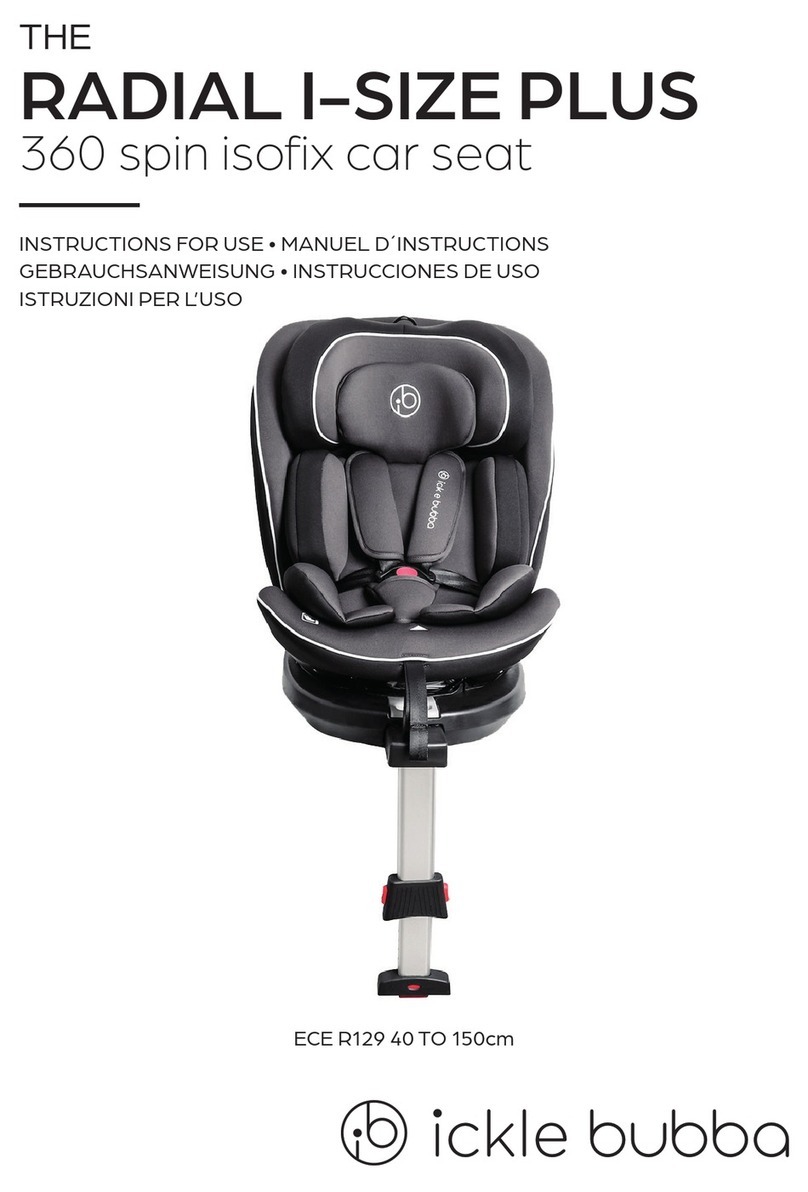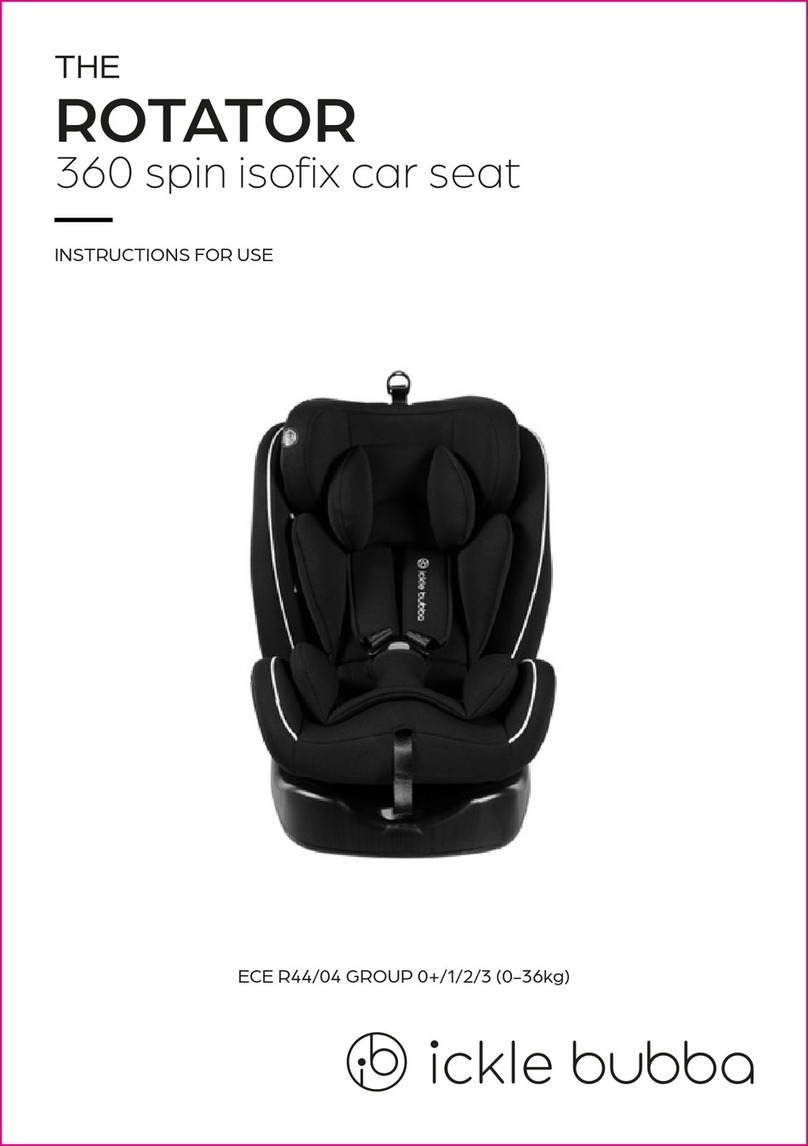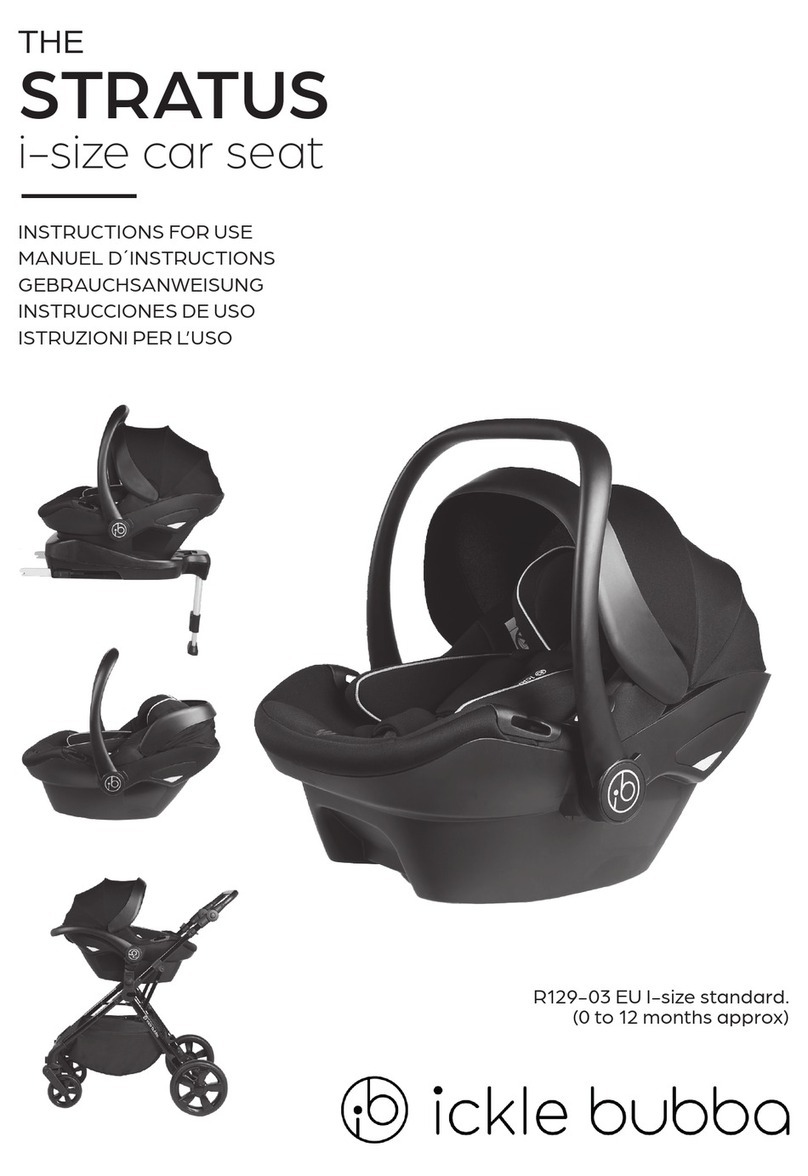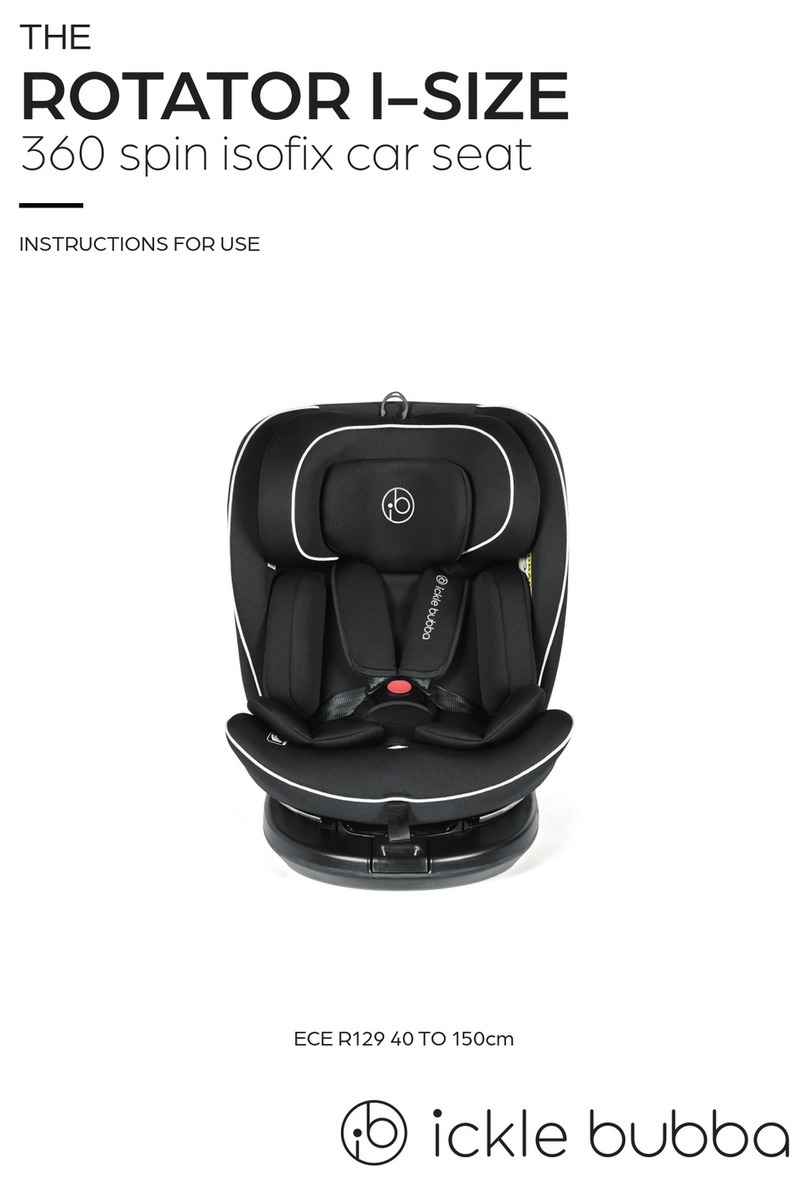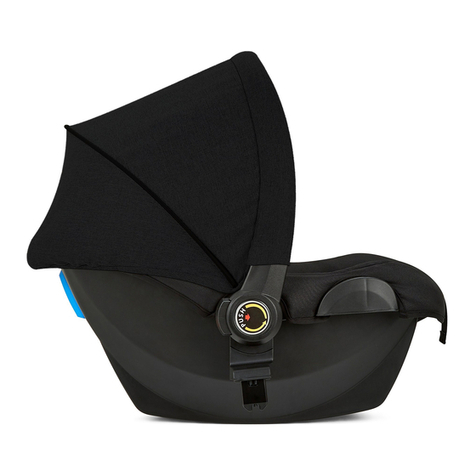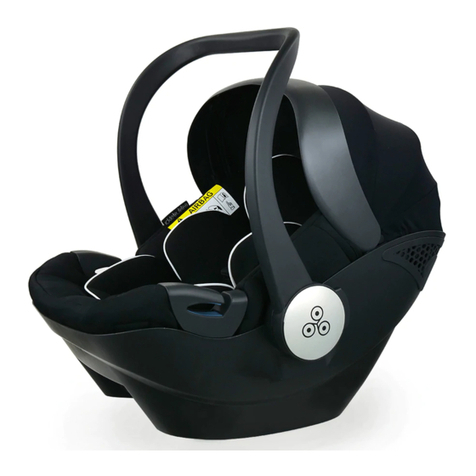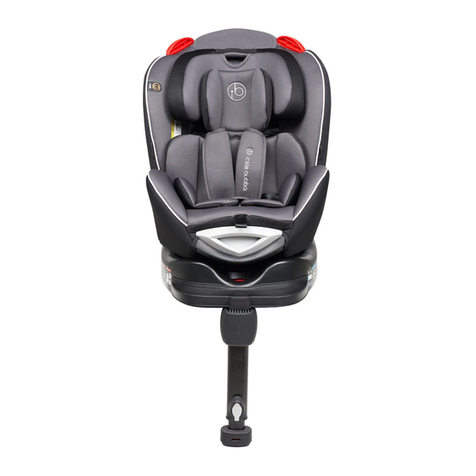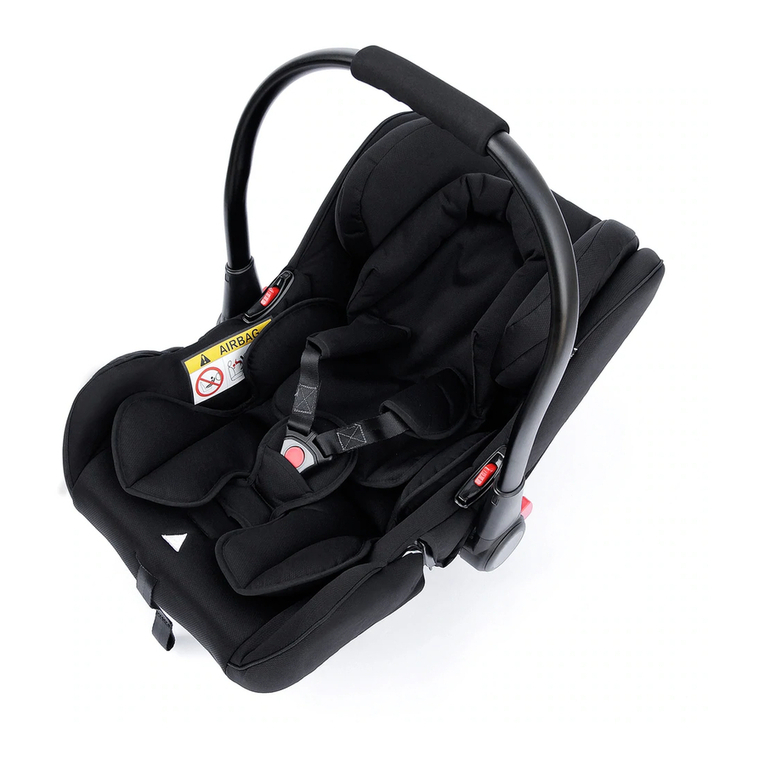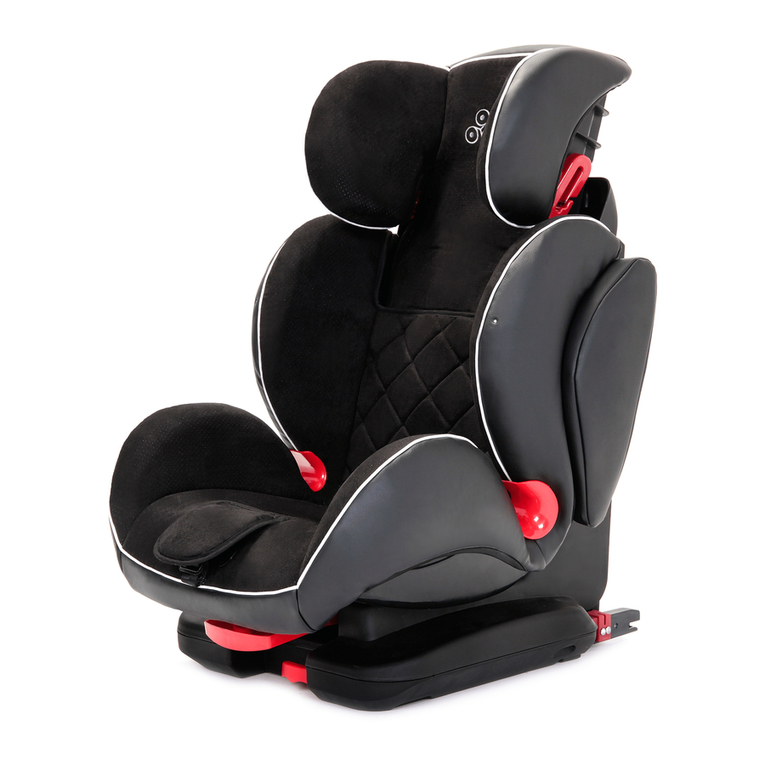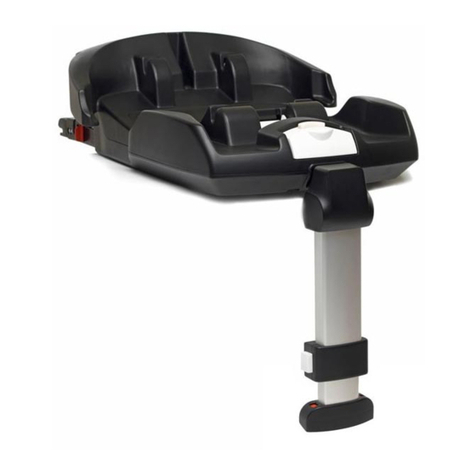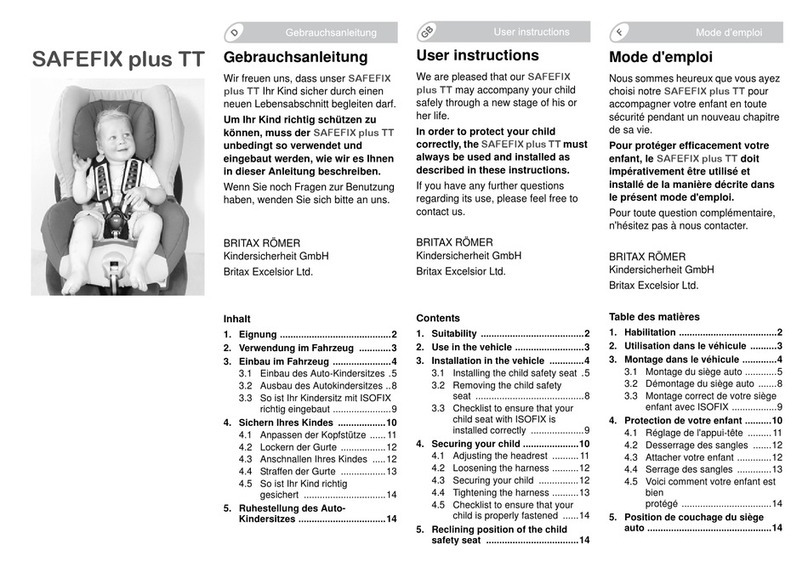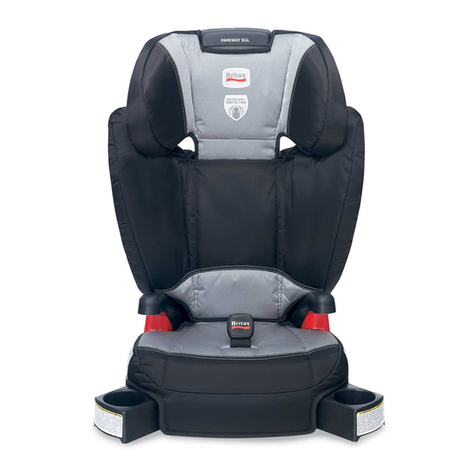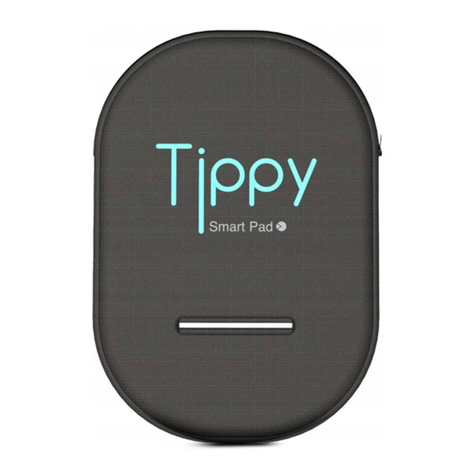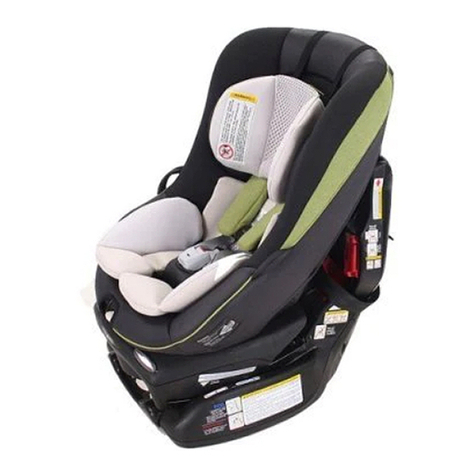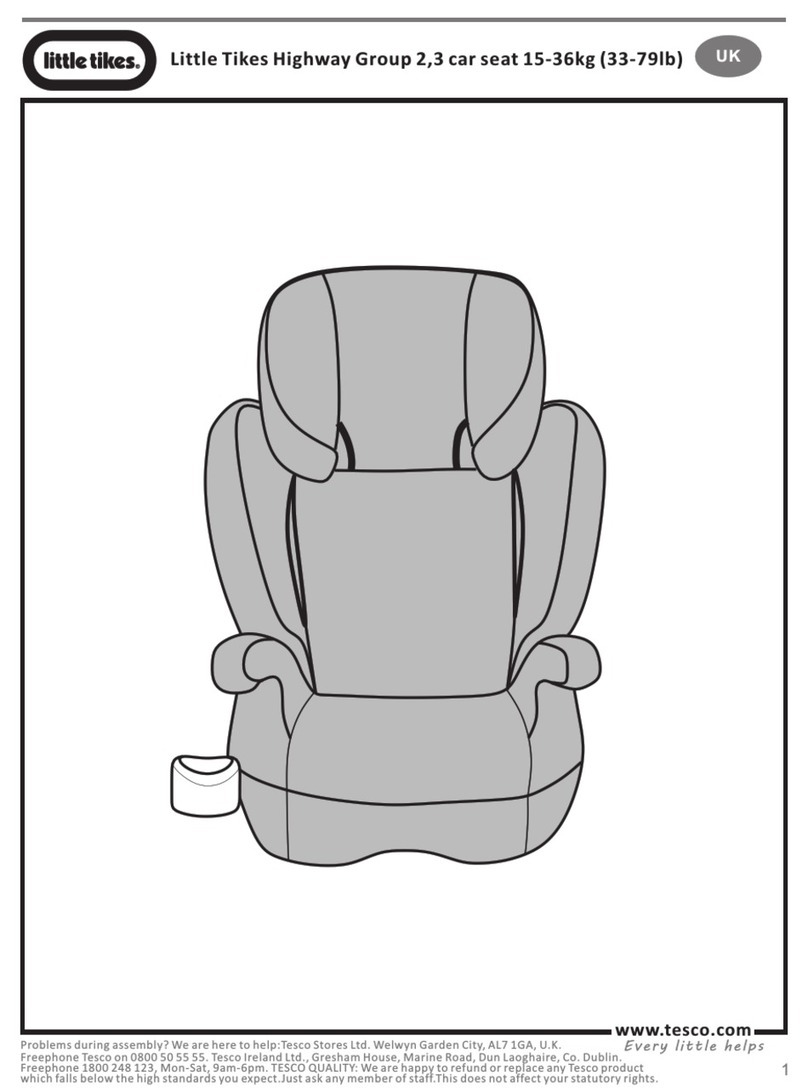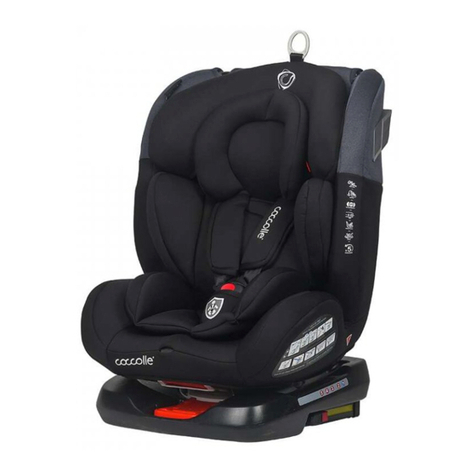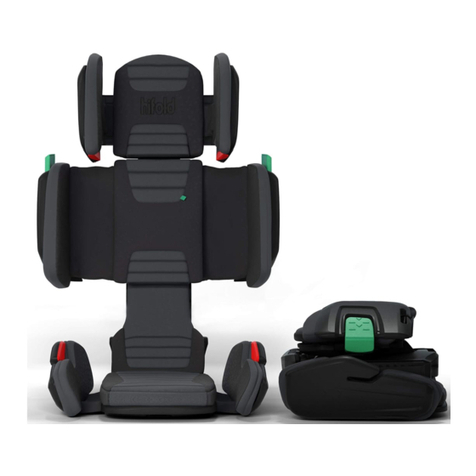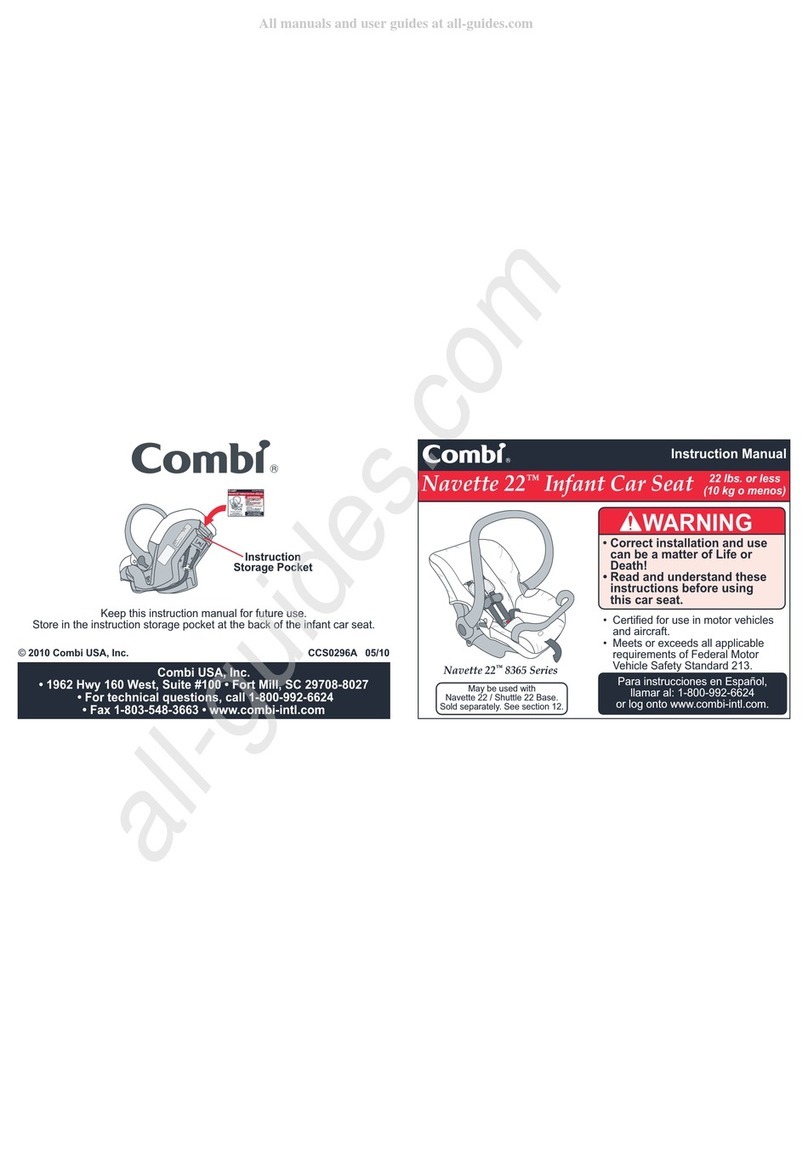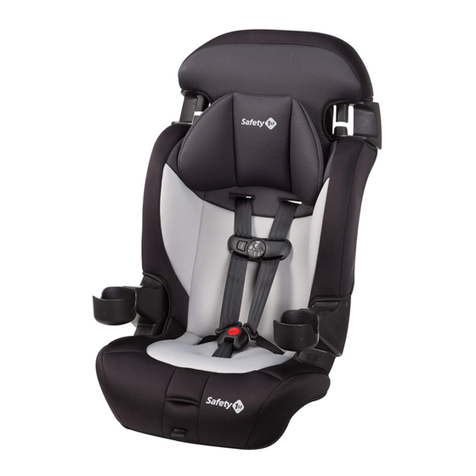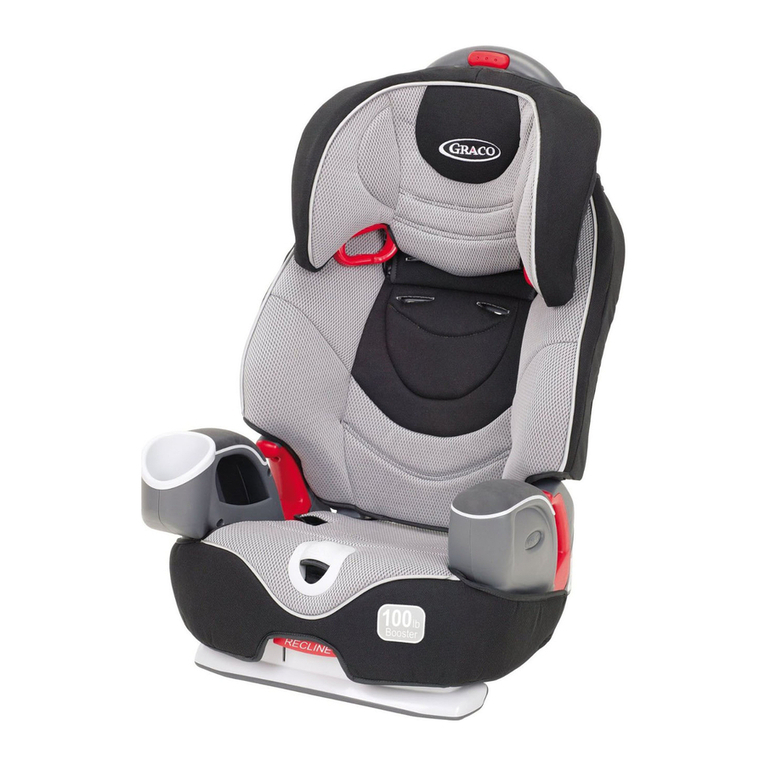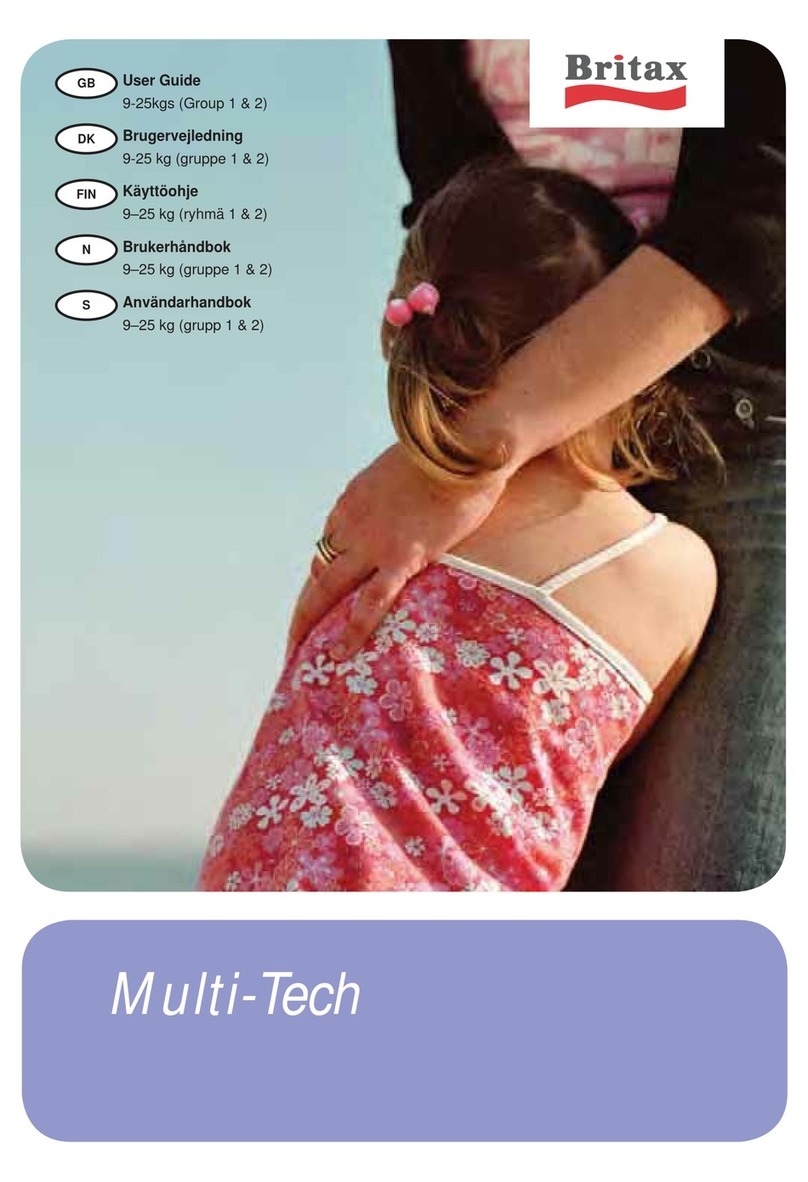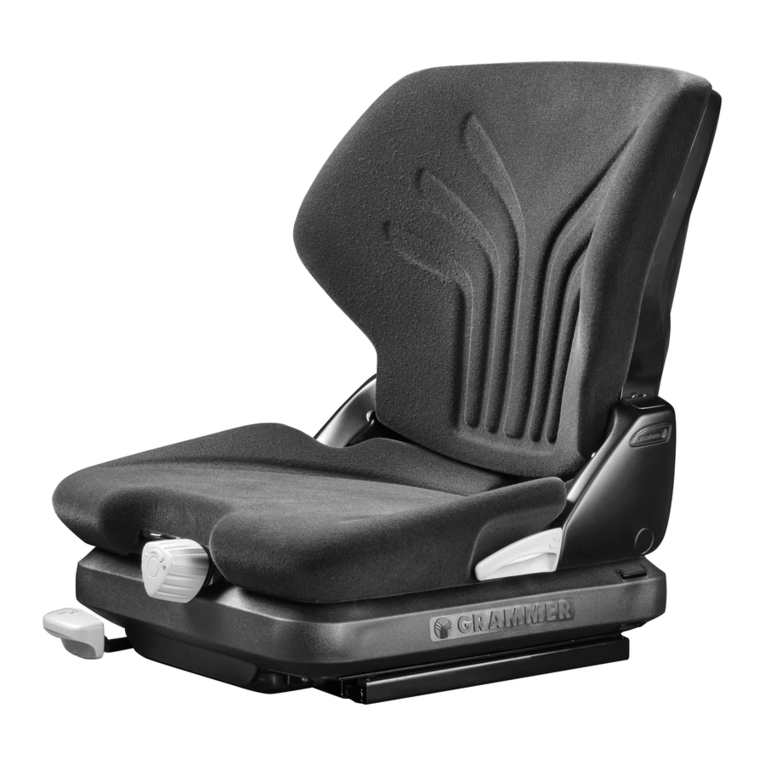
2
Safety Warnings
WARNING: To prevent your child from falling out of the seat, always
check to make sure the carrying handle is clicked into the carrying
position before lifting the seat. Also make sure your child is always
strapped in securely with the harness belt.
WARNING: For the future use of the car seat, it is important that you
store this instruction manual.
WARNING: Never leave a child unattended in the car seat while in the
car or elsewhere.
WARNING: The correct routing of the seat belt is essential for your
child’s safety. Please see the Installation section. Never thread the belt
in any other way. When installing with the seat belt only, use the baby
car seat on a front-facing seat that has been approved according to the
ECE R16 standard or similar.
WARNING: Never use the car seat on a seat equipped with a front
airbag, as this can result in the death or injury of the baby. This does
not apply to side airbags.
WARNING: Do not leave your baby in the car seat on a raised surface,
such as a table, work top, bed, or shopping trolley, due to the risk of
falling. Always secure your child with the harness belt, even when the
seat is not fitted in the car.
Do not leave your baby in the car seat for a long period of time. It is
important for motor and muscle development that you place your baby
on its stomach or back regularly. The seat may become damaged and
unsafe after an accident and therefore should be replaced. The
manufacturer can only guarantee the safety of the seat if it is used by
the original owner. We strongly advise against using a second-hand
product, as you can never be sure of its history. We recommend that
car seats are not used for longer than 5 years after the date of
purchase. The properties of the product may deteriorate, for example,
aging of the plastic (as a result of direct sunlight) and this may not be
visible.
IMPORTANT – Read the instructions carefully
before use and keep for future reference
